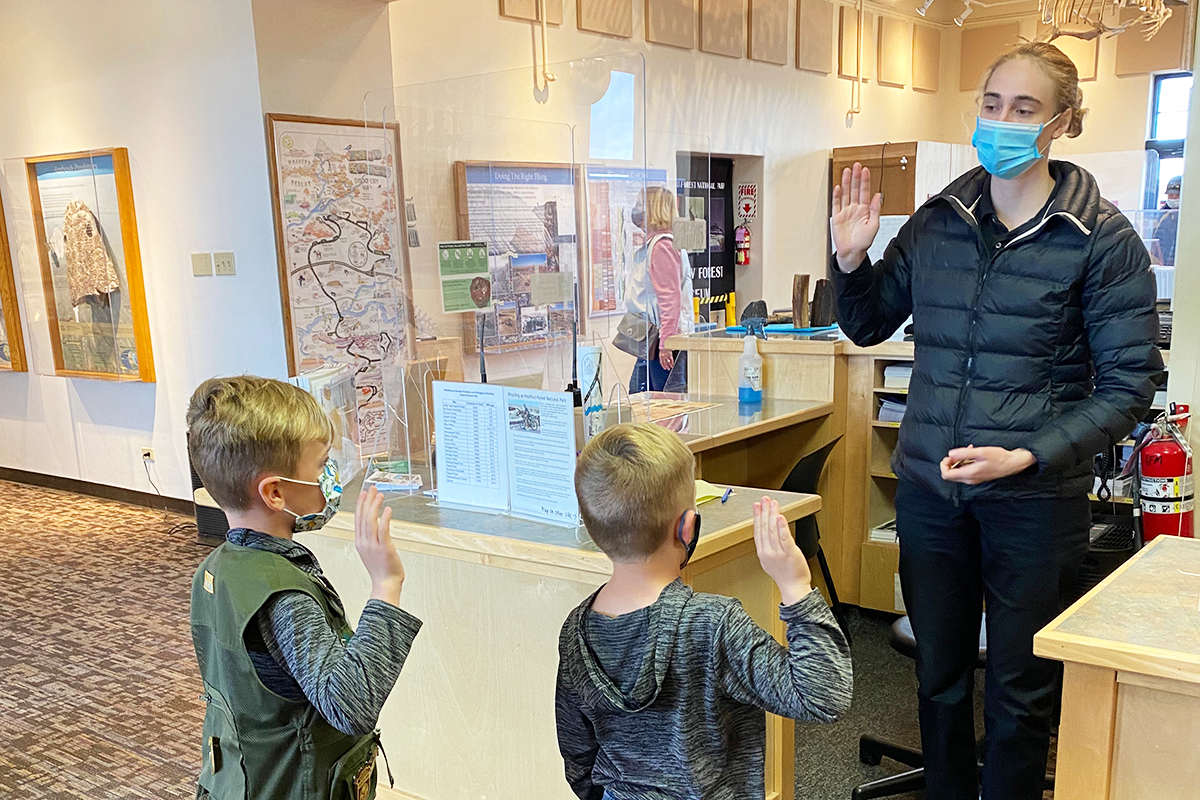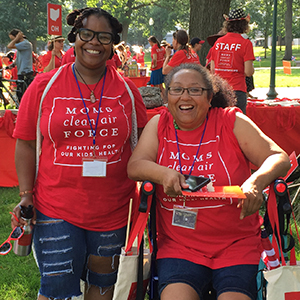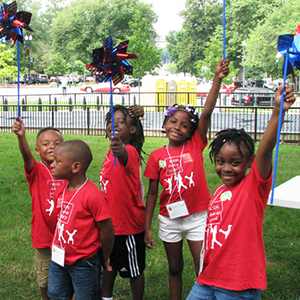
Growing up in small-town Florida, the water was my playground and my connection to nature. I spent countless hours canoeing the canal to my grandparents’ house, wading in shallow water with friends, zipping around on jet skis, and swimming in the springs alongside the creatures that put my town, Crystal River, on the map: manatees.
My parents ran a marina, renting boats and snorkel gear to tourists drawn to the promise of swimming in a clear, spring-fed river with an abundance of manatees. Owning a business reliant on the natural environment meant concerns about the water clarity, overdevelopment, and pollution from growing boat traffic were my family’s kitchen table conversations.
This constant exposure to the natural world and the threats facing it shaped me to my core and formed lasting values rooted in protecting our planet.
Tell Congress: Protect Our Ability to Prepare for and Recover From Severe Weather Threats
Passing down a love for nature
Shortly after becoming a mom, I realized my two sons would have a very different upbringing from my own. Their suburban Florida childhood wouldn’t offer the same untamed rural adventures that shaped mine. I wanted them to develop the same affection for our planet that I had, but it wouldn’t come as effortlessly as tagging along with my parents to work on the weekends. Nurturing that connection would take intention—purposeful outings and experiences that stretched beyond the fences of the neighborhood playground.
I became steadfast in finding ways to shape my sons’ compassion for conservation and lifelong respect for our planet. In our boys’ youngest years, my husband and I made it a priority to visit state parks—from the sandy shores of our coastal beaches like Honeymoon Island and Egmont Key to the cypress swamps at Hillsborough River.
As our boys grew, we set our sights beyond Florida, planning bigger trips to see diverse new landscapes. Visiting national parks became our “thing.” Over the past six years, we’ve had the privilege of exploring 13 national parks and plan to visit three more this summer. These trips are more than vacations; they’re full immersions into the beauty of each park. We hike winding trails to waterfalls and mountaintops, dive into glacial-fed lakes, boat across turquoise waters, and drive along scenic highways, pulling over to take in breathtaking views at every turn.
It’s not all wonder all the time, of course. Half the time, I’m panicked that my boys are going to fall off a cliff. They are either complaining that their legs hurt or running so fast down the trails I’m certain they’re going to bust it. There’s no in between!
Experiencing nature matters
Research shows that witnessing awe-inspiring nature fosters generosity, strengthens pro-social values like compassion, and enhances ethical decision-making. Also, there’s something humbling about standing at the edge of a towering cliff, gazing out over landscapes you’ve only seen as desktop “wallpaper.” State and national parks remind us of our place in the world—how small we are in the grand scheme of things—and command our respect.
And it’s not just the vistas that are transformative. National park rangers who share their knowledge and passion, visitor centers that remind us to leave no trace and take only pictures, and the Junior Ranger programs that teach kids how to protect the parks all play a vital role.

The threat to our national parks
Trump’s cuts to the National Park Service have been so deeply concerning to me. These lands, our lands, need protection, and the people who safeguard them are key to preserving their beauty and educating visitors about their fragility. We can’t afford to lose the rangers, programs, and resources that keep these spaces accessible and sustainable for all, including future generations.
Parks are already feeling the impact: visitor centers are closing on certain days due to staffing shortages, some campgrounds have stopped taking reservations, and entrance lines stretch longer than ever. Trails sit closed, and public facilities are left unkempt. It’s disheartening to think about the long-term consequences these treasured places that offer inexpensive vacations for all will face without the proper care and resources to sustain them.
My husband and I debated whether to cancel our national parks trip this summer, knowing the experience might not be what we had envisioned. But in the end, we decided we’ll go no matter the challenges. Skipping the trip feels like succumbing to defeat when these parks need us as much as we need them—now more than ever.
Beyond the national parks
Trump’s cuts don’t just affect the iconic national parks; they ripple through national forests, monuments, and wildlife refuges as well. Even my small hometown hasn’t been spared. The Crystal River National Wildlife Refuge—the only refuge established specifically to protect the Florida manatee—lost two of its eight employees. With reduced staff, it will be increasingly difficult to enforce manatee sanctuaries, conduct wildlife surveys, lead educational lessons, and rescue injured manatees. Heartbreaking.
Conservation is bipartisan
Fortunately, conservation typically garners bipartisan support. When Governor DeSantis recently attempted to push through plans for hotels and golf courses on Florida’s state park lands, people across the political spectrum took action. Republicans and Democrats alike flooded lawmakers with hundreds of thousands of emails opposing the development, and their voices were heard. The proposal was swiftly scrapped, and the backlash led to the creation of the State Park Preservation Act, which mandates public hearings for any land management changes.
I can only hope that the growing opposition to Trump’s cuts to public lands leads to the same outcome we saw in Florida. Across the country, people are speaking out, showing up at protests, and rallying behind organizations fighting to protect these spaces. The more voices that join the movement, the greater the chance we have to preserve these parks.

How you can help
If you love America’s parks like my family does, join us in taking action to support them. Sign a petition. Donate to organizations dedicated to preservation. Here’s a list of organizations working to protect our parks:
- The Coalition to Protect America’s National Parks
- The National Environmental Education Foundation
- National Park Foundation
- 5 Calls: Defend Our National Parks
Most importantly, if you have the opportunity, visit these incredible public lands. There’s no better way to understand why they’re worth fighting for than experiencing them firsthand. See you out there.
Tell Congress: Protect Our Ability to Prepare for and Recover From Severe Weather Threats




